Excerpts from new AR/VR patent applications filed by the U.S. Patent Office on November 18, 2023
Article related citations and references:XR Navigation Network
A total of 46 patents have been updated.
(XR Navigation Network November 18, 2023) Recently, the U.S. Patent and Trademark Office announced a batch of new AR/VR patents. The following is compiled by Yingwei.com (for details, please click on the patent title), a total of 46 articles. For more patent disclosures, please visit the patent section of Yingwei.comhttps://patent.nweon.com/To search, you can also join the Yingwei.com AR/VR patent exchange WeChat group (see the end of the article for details).
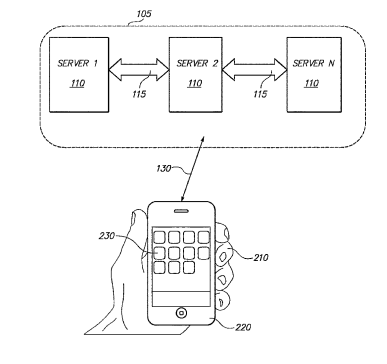
In one embodiment, the patent describes a system that allows two or more users to interact within a virtual world that includes virtual world data. The system includes a computer network including one or more computing devices, and software stored at least partially in memory and executable by processing circuitry to process at least a portion of virtual world data; wherein at least a first portion of the virtual world data originates from a first user virtual world local to the first user, and wherein said computer network is operable to transmit said first portion to a user device for presentation to a second user such that said second user can obtain information from said third user location to experience the first portion, while enabling all aspects of the first user's virtual world to be effectively transferred to the second user.
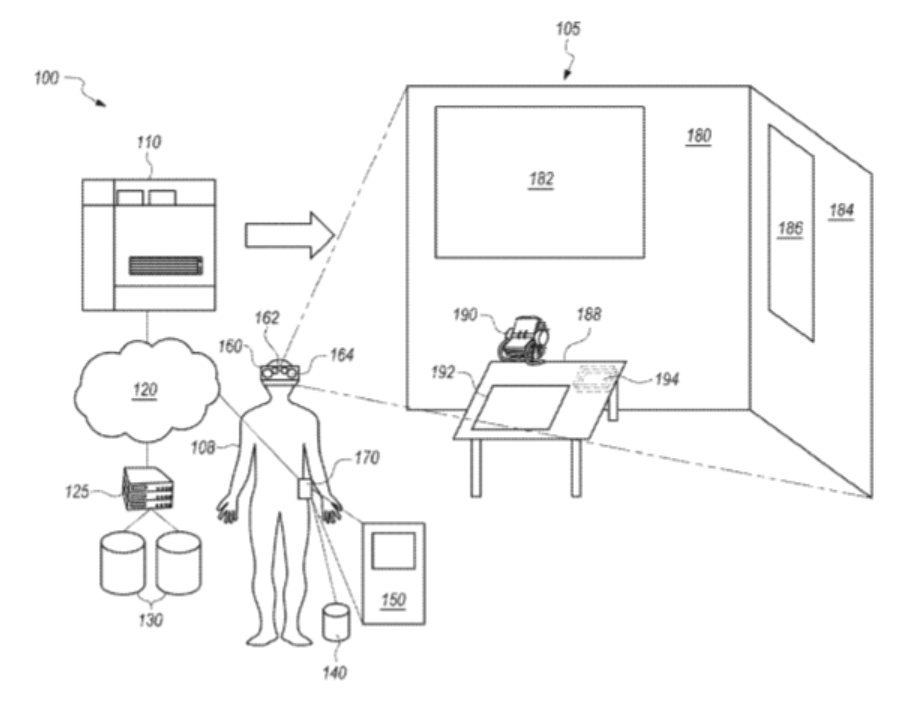
In one embodiment, the patent describes systems and methods for authorizing users in a spatial three-dimensional environment. The systems and methods may include receiving a request to execute an application on the mixed reality display system, thereby authorizing the web service to the user. Displaying an authorization window to the user configured to accept user input associated with authorization of the web service; the system simultaneously preventing the application or other applications from receiving the user input; communicating the user input to the web service; receiving access from the web service token; and passes the access token to the application to obtain the user's authorization. The authorization window may be a modal window displayed by the mixed reality display system in an immersive mode.
3.《Magic Leap Patent | Planar waveguide apparatus with diffraction element(s) and system employing same》
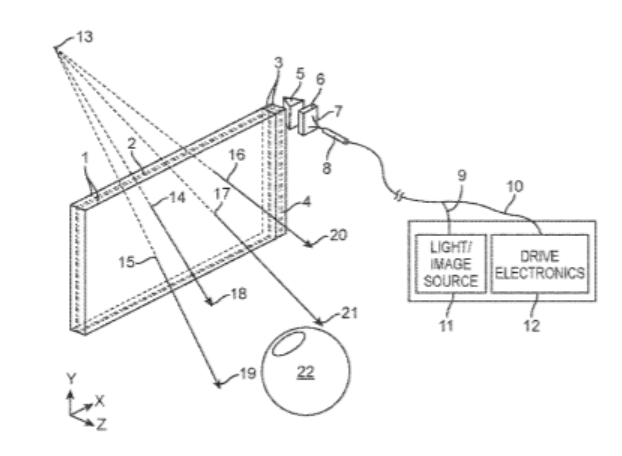
In one embodiment, the patent describes a waveguide device that includes a planar waveguide and at least one diffractive optical element (DOE) that provides multiple optical paths between the exterior and interior of the planar waveguide. DOE's phase profile combines a linear diffraction grating with a circular lens to form a wavefront and produce a beam with the desired focus. Waveguide devices can be assembled into multiple focal planes. The DOE may have lower diffraction efficiency, and the planar waveguide may be transparent when viewed normally, allowing light from the environment to pass through. The light can be returned to sequentially pass through the planar waveguide in time.
4.《Magic Leap Patent | Asynchronous asic (Magic Leap Patent: Asynchronous ASIC)》
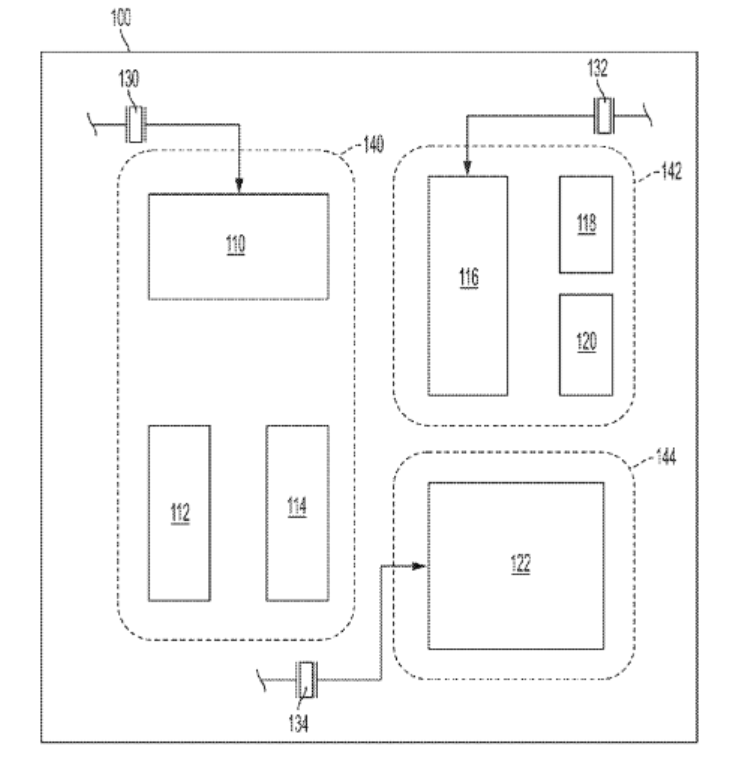
In one embodiment, the patent describes an electronic device that includes a first clock configured to operate at a frequency. The first circuit of the electronic device is configured to synchronize with the first clock. The second circuit is configured to determine the second clock based on the first clock. The second clock is configured to operate at the frequency of the first clock and is configured to operate with a phase shift relative to the first clock. The third circuit is configured to be synchronized with the second clock.
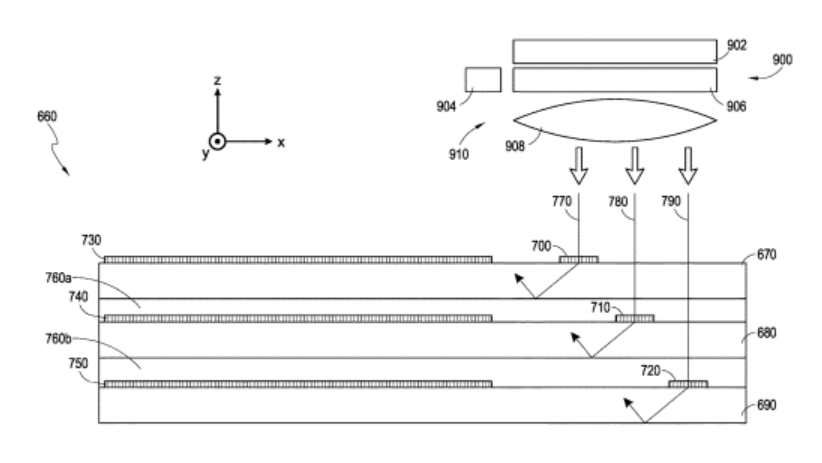
In one embodiment, the patent describes an illumination system that separates different colors into laterally displaced beams, which can be used to direct different colored image content into an eyepiece for displaying the image in the eye. Such eyepieces could be used in augmented reality head-mounted displays, for example. In one embodiment, an illumination system utilizes one or more waveguides to direct light from a light source to a spatial light modulator. Light from the spatial light modulator can be directed toward the eyepiece. Different colors of light are coupled out at different angles from one or more waveguides and directed along different beam paths.
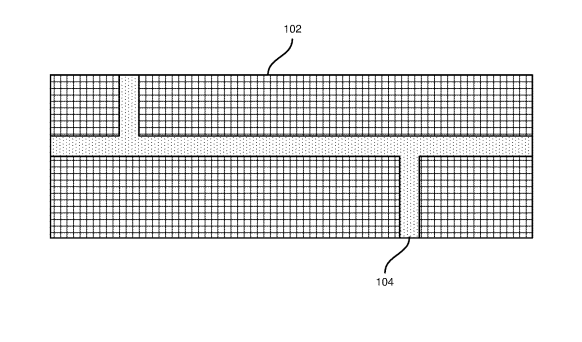
In one embodiment, the replaceable antenna assembly described in the patent may include a carrier sized to fit inside an overmolded window, wherein the overmolded window may be overmolded into a gap of a frame of a computing device . Additionally, the replaceable antenna assembly may include antenna traces disposed in a conductive layer of the carrier to electrically couple to the computing device. Therein, the antenna traces may be surrounded by non-conductive material of the carrier.
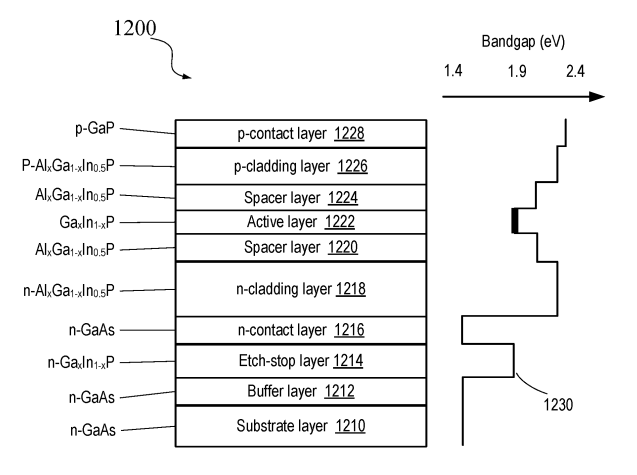
In one embodiment, the patent describes a light source that includes a p-type semiconductor layer, an n-type semiconductor layer, and an active region between the p-type semiconductor and the n-type semiconductor. The active region includes a plurality of barrier layers and one or more quantum well layers. The one or more quantum well layers include at least one quantum well layer doped with an n-type dopant and a p-type dopant. The at least one quantum well layer has a net carrier concentration between about 1×1017/cm3 and about 10×1017/cm2.
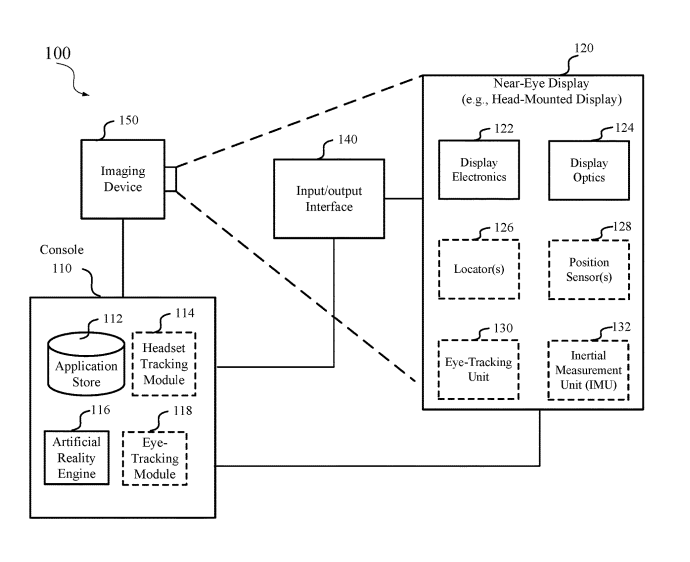
In one embodiment, the patent describes a light source that includes a core-shell nanowire Micro LED array. Each core-shell nanowire Micro LED includes: a first semiconductor epitaxial layer including a nanowire core formed therein; in physical contact with and surrounding sidewalls at the bottom of the nanowire core, or in contact with the nanowire core. A first layer of dielectric material in physical contact with the bottom surface of the nanowire core; a second layer of dielectric material in physical contact with the top surface of the nanowire core; grown only on the sidewalls of the nanowire core and configured to emit A visible light active layer; and a second semiconductor layer grown on the active layer, wherein the nanowire core and the second semiconductor layer are counter-doped layer by layer.
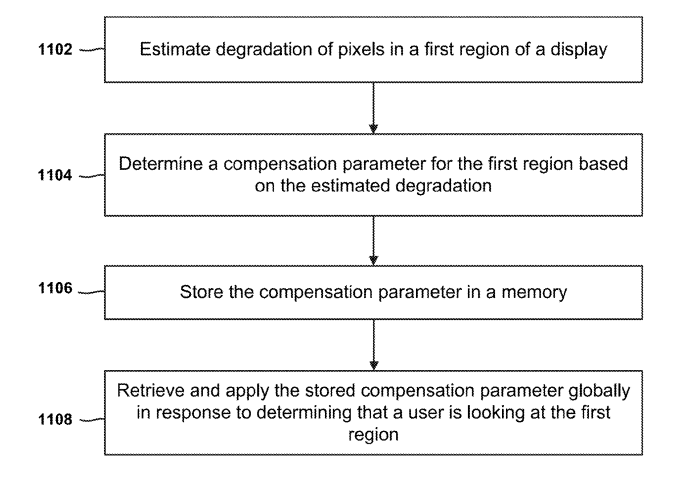
In one embodiment, the patent describes a method of compensating for aging in electronic displays. When an electronic display is divided into multiple zones, each zone can have a separate compensation parameter. Compensation parameters may be determined by estimating pixel degradation based on usage of the area over the lifetime of the electronic display, such as the brightness of a previously displayed image. Although each region can have its own compensation parameter, aging compensation can be performed by selecting one compensation parameter from a set of stored parameters to be used as a global compensation parameter applied across all display pixels. Global compensation parameters can be selected based on the area the user is viewing. Therefore, the display system may include or be coupled to monitor eye movementeye trackingunit.
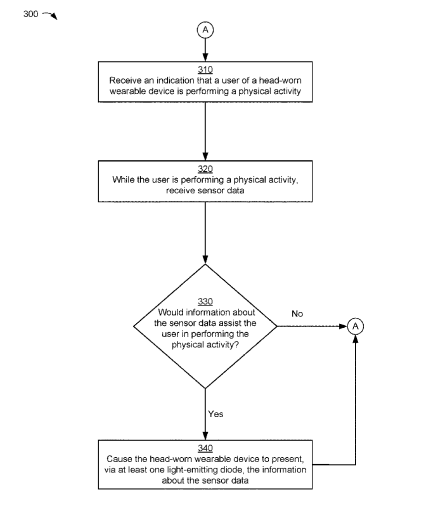
In one embodiment, the patent describes a method of coordinating the display of biometric data at a head-mounted wearable device based on sensor data from the wrist wearable device. The method includes receiving an indication that a user of a head-mounted wearable device is engaging in physical activity. The head-mounted wearable device includes light-emitting diodes that are visible to a user when the user wears the head-mounted wearable device and communicate with a wrist wearable device worn by the user. The wrist wearable device is configured to sense the user's biometric data during physical activity. Upon receipt of the indication and while the user is performing the activity, the determination of the information regarding the biometric data that satisfies the indication regarding the biometric data will assist the user in determining a physiologically based threshold for performing the physical activity based on the biometric data.
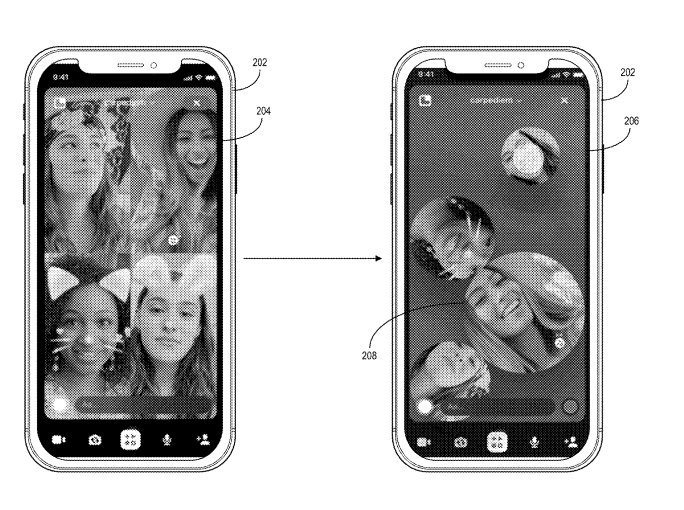
In one embodiment, the patent describes a system for presenting a customized video call interface with customizable video elements and/or interactive interface objects during a video call. For example, the system can conduct a video call with one or more participant client devices over a streaming channel established for the video call. During a video call, the system may present video elements depicting video received from a participant's client device in a grid view display format. Subsequently, upon detecting user interaction indicating a request to customize the video call interface, the system may present the video elements within the customized video call interface in a self-viewing display format.
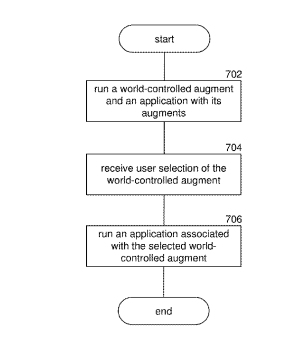
In one embodiment, the patent describes enhancements to world control and enhancements to application control. In artificial reality environments, enhancements to world control can be controlled directly through the shell. To allow even inexperienced users to develop world control enhancements, the patent provides a world control builder system. Enhancements to application control can be resource intensive, can support complex interactions between them, can require or make extensive use of input and permission resources, and are controlled by their hosting application. When a running application is stopped, the application turns off its application control enhancements, but you can choose to have the XR system run world control enhancements as long as the application is not running. Enhanced world control preserves the look and feel of applications in an artificial reality environment, but uses very few system resources.
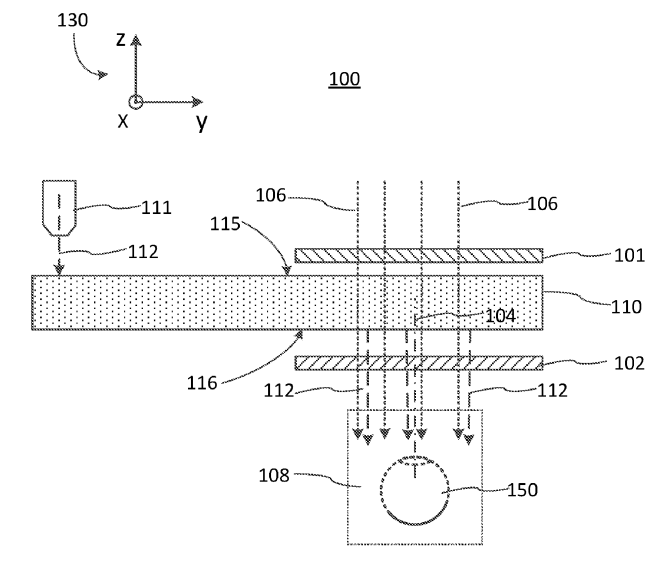
In one embodiment, the patent describes a near-eye display that includes a first polarizer in the path of external light to a viewing window of the display and for polarizing the external light to a first polarization state. A see-through light guide is disposed in the path between the first polarizer and the viewing window and serves to deliver image light to the viewing window in a second orthogonal polarization state while transmitting external light in the first polarization state. A second polarizer is disposed in the path downstream of the transparent light guide.
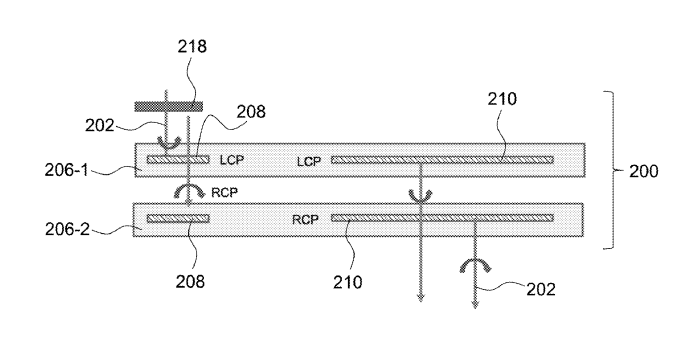
In one embodiment, the patent describes a light guide assembly that includes a stack of optically separated light guide plates for delivering image light to a viewing window. At least one light guide plate of the stack includes a coupler configured to switchably incouple image light into the light guide plate. Switchable couplers can be used to chronologically pass through a stack of different light guides, each light guide carrying a portion of the image, such as a field portion of the image or a color channel. The temporal sequence through the light guides allows compensation of image shifts caused by the light guides not being parallel to each other by providing corresponding shifts in the parts of the image carried by different light guides.
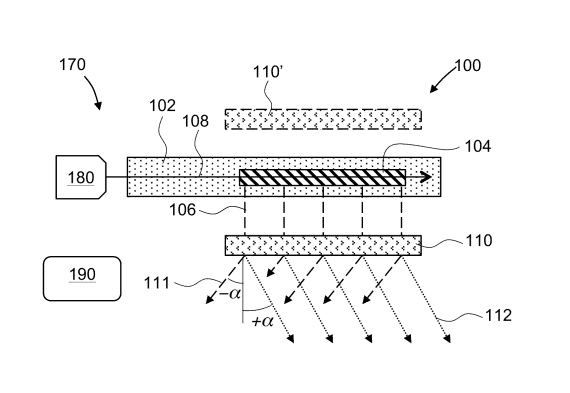
In one embodiment, the patent describes a near-eye display having an image projector coupled to a light guide and configured to receive and propagate image light provided by the image projector. The field of view of a near-eye display can be expanded by providing a beam redirector downstream of the light guide. The beam redirector is used to controllably redirect the image light in coordination with the image projector displaying different portions of the field of view. To compensate for the redirection of external light by the beam redirector, a second beam redirector may be provided upstream of the first redirector and the light guide.
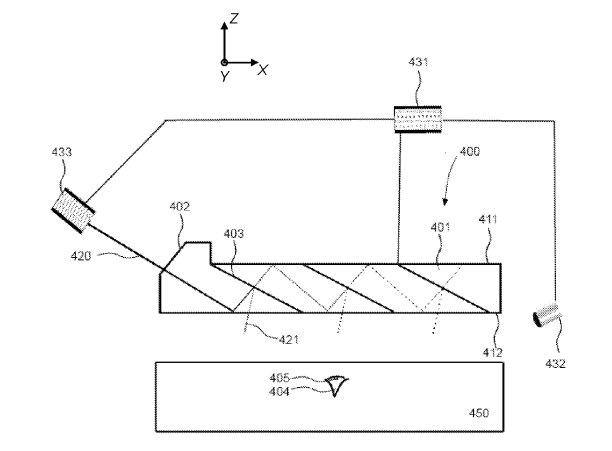
In one embodiment, the patent describes a waveguide for transmitting image light in a display device. The waveguide includes a waveguide body, a coupler configured to couple the image light into the waveguide body and propagate the image light along a zigzag optical path within the waveguide body, and a plurality of tilted reflectors. The tilted reflector is arranged in the waveguide body along the zigzag optical path and has adjustable reflectivity parameters. The waveguide may include a plurality of tilted polarization-selective bulk mirrors and a liquid crystal layer configured to change polarization of the image light, the liquid crystal layer being disposed between the backplate electrode and the pixelated electrode configured to change the polarization of the image light by applying a spatially varying voltage. distribution to control the liquid crystal layer.
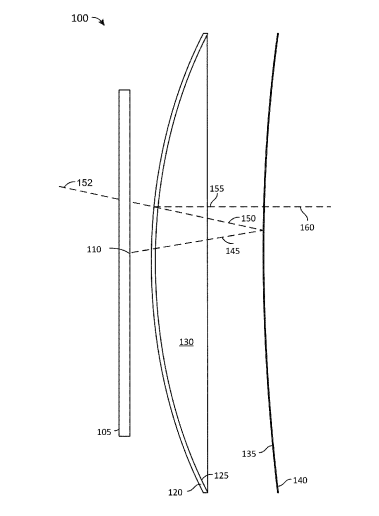
In one embodiment, the device described in the patent may include a display and optical configuration. The optical arrangement may include a Fresnel lens assembly including a Fresnel lens and a reflective polarizer. Fresnel lenses may have a structured surface that includes multiple facets, and there may be steps between pairs of adjacent facets. The reflective polarizer may include a plurality of reflective polarizer sections, wherein each reflective deflector section coincides with a corresponding face of the Fresnel lens. The reflective polarizer may be configured to reflect a first polarization of incident light and transmit a second polarization of incident light.
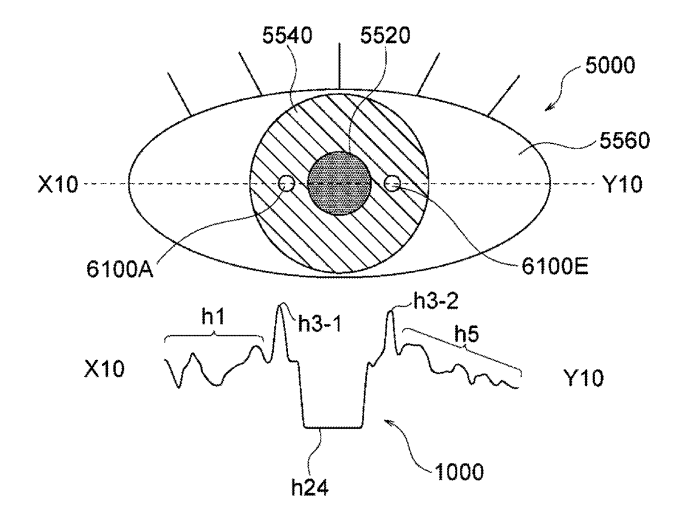
In one embodiment, the patent describes a line of sight detection device. The sight line detection device includes: an imaging element with an event-driven function; a first pattern generation unit that generates a Purkinje detection pattern; a second pattern generation unit that generates a pupil detection pattern; and a third pattern generation unit that generates an event-driven pattern.
19.《Sony Patent | Map generation system and method (Sony Patent: Map generation system and method)》
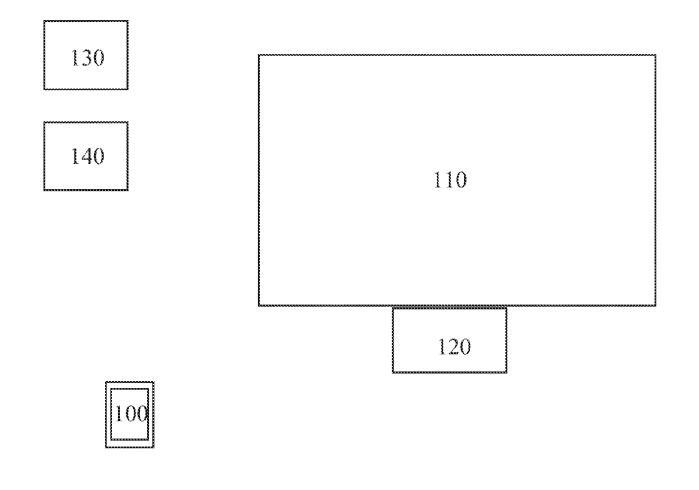
In one embodiment, the patent describes a system for generating and managing mappings of a plurality of real-world environments, the system comprising a mapping generation unit generating a mapping for each of the plurality of real-world environments, The identified signal information is associated with a mapping corresponding to the same real-world environment by a wireless signal identification unit, and a compilation unit that compiles the corresponding generated mapping into a synthetic mapping.
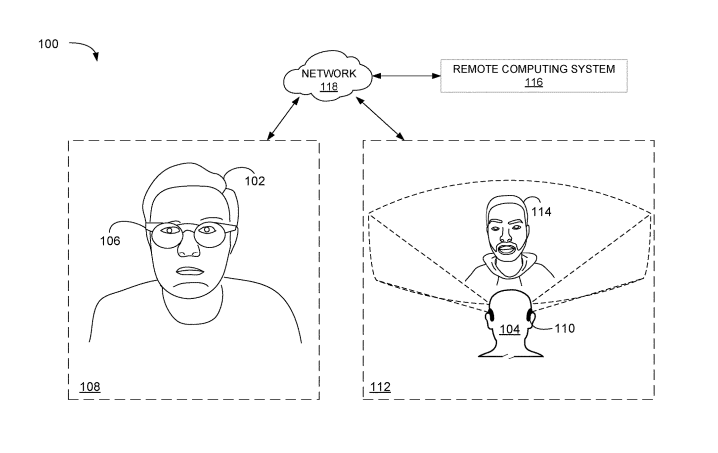
In one embodiment, the patent describes a method for displaying computer-generated facial expressions. The method includes receiving expression data and generating one or more facial expressions of the user's eye area based at least on the expression data. The method also includes displaying one or more facial expressions in the eye area on an outward-facing display of the head mounted device.

In one embodiment, the patent describes a method for displaying computer-generated facial expressions. The method includes receiving expression data and generating one or more facial expressions of the user's eye area based at least on the expression data. The method also includes displaying one or more facial expressions in the eye area on an outward-facing display of the head mounted device.
twenty two. "Microsoft Patent | Updating a 3d map of an environment (Microsoft Patent: Updating a 3D map of an environment)》
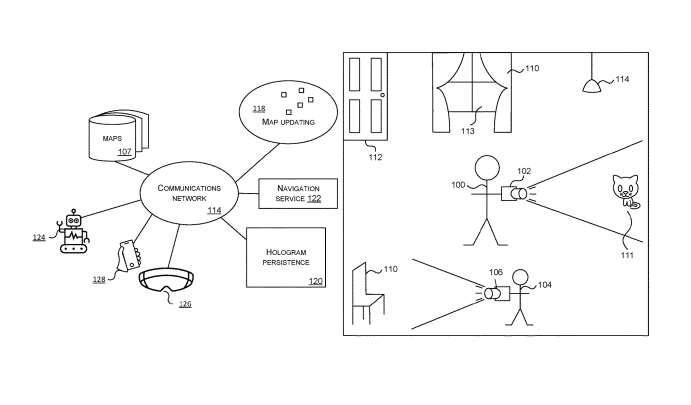
In one embodiment, the update includes a 3D map of sensor data items depicting the environment, each sensor data item having one or more associated variables, such as the pose of the capture device or the location of a landmark. Computes graphs based on sensor data items. The mapping includes nodes and edges, the nodes represent at least one variable in the received sensor data items, and the edges represent relationships between variables. The map is divided into multiple subgraphs to reduce the number of variables shared between subgraphs. Each of the plurality of subgraphs is assigned to a corresponding worker node. Each worker node calculates the updated value of the variable. The procedure uses a consistency procedure to update the values of variables shared between subgraphs to common values. Update the environment's 3D map based on the updated value of the variable.
twenty three. "Microsoft Patent | Alignment assessment for head-mounted display system (Microsoft Patent: Head-mounted display system calibration assessment)》
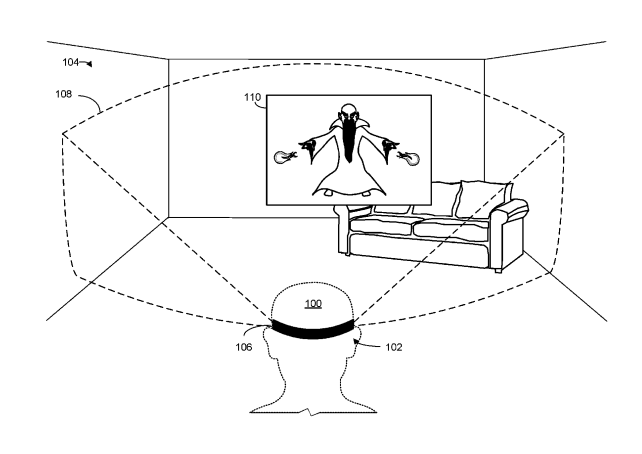
In one embodiment, the patent describes a head mounted display system that includes a wearable frame assembly and a display assembly mounted to the wearable frame assembly and configured to provide display light for viewing by a user's eyes. Cameras mounted to the wearable frame assembly are configured to image the surrounding real-world environment. Each of the one or more strain gauges has one or more variable strain parameters based at least in part on the amount of strain applied to the head mounted display system. The logic machine is configured to evaluate alignment of one or both of the display assembly and the camera based at least in part on one or more strain parameters.
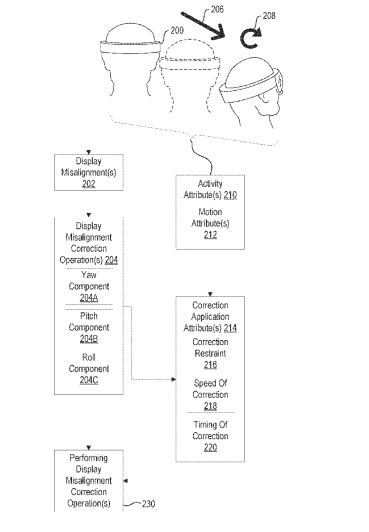
In one embodiment, a system for facilitating display misalignment correction includes one or more processors and storage executable by the one or more processors to configure the system to: determine user operations related to a stereoscopic display system associated one or more user activity attributes; determining one or more correction application attributes; and applying the one or more display misalignment correction operations based on the one or more correction application attributes to The presentation of the content in the stereoscopic display system is aligned to achieve display misalignment correction in a manner that alleviates user discomfort.
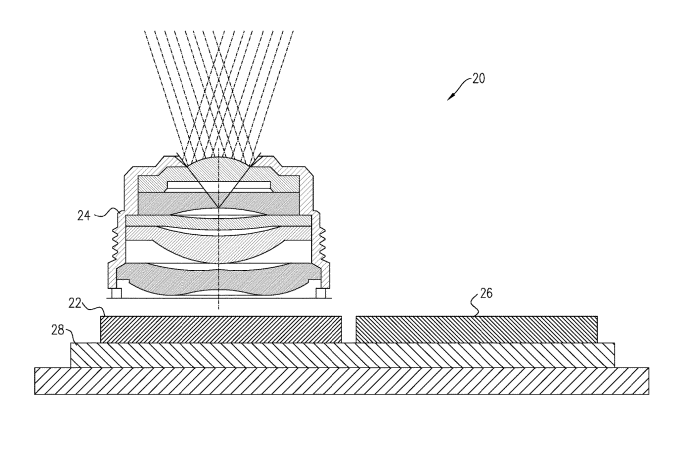
In one embodiment, the optical sensing device described in the patent includes a planar substrate and an optical transceiver array disposed on the planar substrate. Each optical transceiver includes a photodetector, at least one turning mirror having a reflective surface disposed obliquely relative to the substrate, and a plurality of waveguides disposed parallel to the substrate. The waveguide includes a transmitting waveguide and a receiving waveguide. The transmitting waveguide couple transmits the emitted light from the coherent light source to the at least one turning mirror for output from the optical transceiver. The receiving waveguide receives the light transmitted by the at least 1 The turning mirror reflects incident light and delivers the incident light to a photodetector.
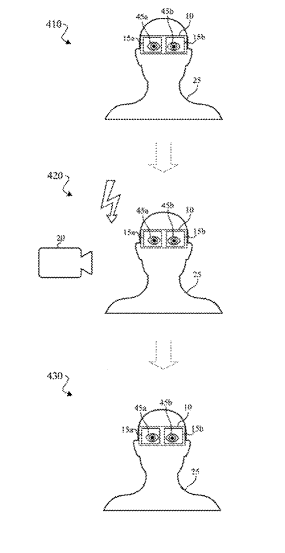
In one embodiment, the patent describes a method that includes controlling visible light transmission characteristics of a viewing portion of a first device during an event in which an image of the first device is captured by an image of a second device. The viewing portion of the first device rapidly transitions from the first state to the second state, eg becoming brighter or darker, for camera exposure. The dark look of the viewing portion of the first device when outdoors can be transformed into a bright look when taking photos or videos. While taking photos or videos, the viewing portion of the first device can remain in the first state. For example, when using a flash to take photos or videos, it is possible to maintain the clear appearance of the viewing portion of the first device when it is inside.
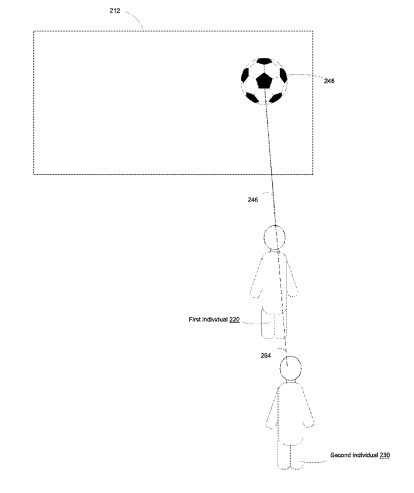
In one embodiment, the patent describes a method that includes determining a first rendering characteristic based on a first viewing angle of a first person relative to the display; and determining a second rendering characteristic based on a second viewing angle of a second person relative to the display. The first rendering characteristic is different from the second rendering characteristic. The method includes generating, by a rendering system, first display content data according to a first rendering characteristic, and generating, by a rendering system, second display content data according to a second rendering characteristic. The first display content data is associated with the first perspective. The second display content data is associated with the second perspective.
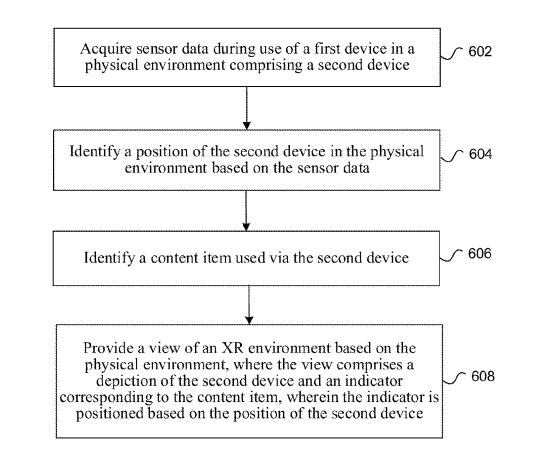
In one embodiment, the patent describes methods that facilitate the use of application content such as text, images, videos, and 3D models in an XR environment. The first device (eg, a headset) provides an indicator corresponding to a content item currently/recently used on a second device (eg, a mobile phone), where the indicator is positioned based on the location of the second device. Users can access the website on their mobile phone and see a view with a description of their mobile phone when using their headset.
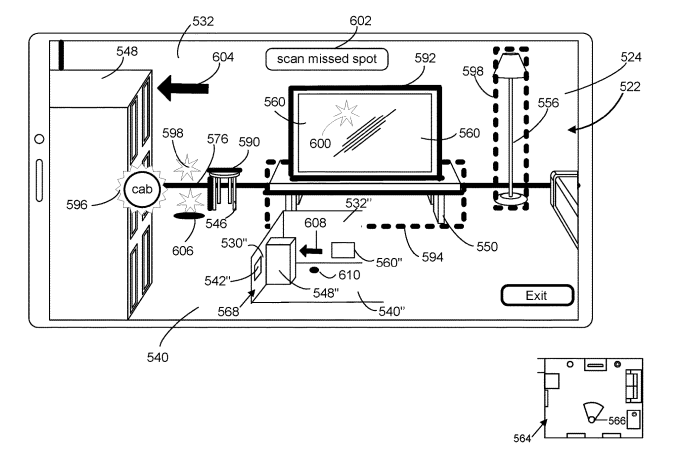
In one embodiment, the patent describes a computer system that displays a preview of a three-dimensional model of a physical environment, the three-dimensional model including a partially completed three-dimensional model of the physical environment displayed in a first direction corresponding to the user's first viewpoint. The computer system detects a first movement that changes the user's current viewpoint in the physical environment to a second viewpoint and updates a preview of the three-dimensional model including adding additional information to the partially completed three-dimensional model and rotating it to the second orientation. When displaying a second view of the physical environment corresponding to the second viewpoint, the computer system, in response to detecting the first input, updates a preview of the three-dimensional model in the first user interface, including rotating the partially completed three-dimensional model to align with the user's The second viewpoint does not correspond to the third direction.
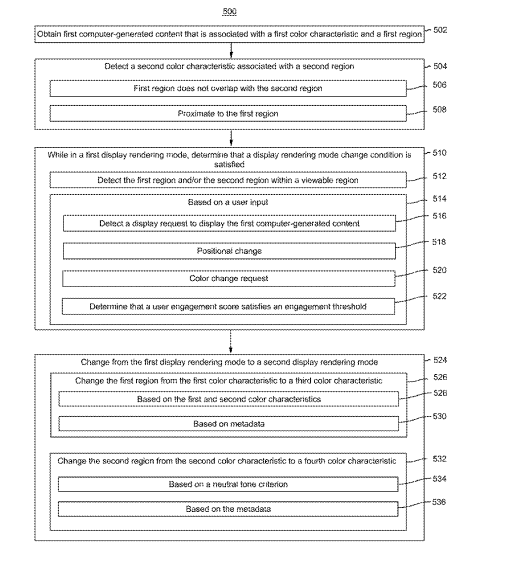
In one embodiment, the patent describes a method that includes obtaining computer-generated content associated with a first color characteristic. computer-generated content associated with a first area of the physical environment; detecting a second color characteristic associated with a second area of the physical environment that is different from the first area of the physical environment; when the electronic device is in a state that includes the first and second color characteristics When the electronic device is in the first display presentation mode, it is determined that the display presentation mode change condition is met, and the electronic device is accordingly changed from the first display presentation mode to the second display presentation mode. Changing to the second display rendering mode includes changing the first region from a first color characteristic to a third color characteristic, or changing the second region from a second color characteristic to a fourth color characteristic that is different from the third color characteristic.
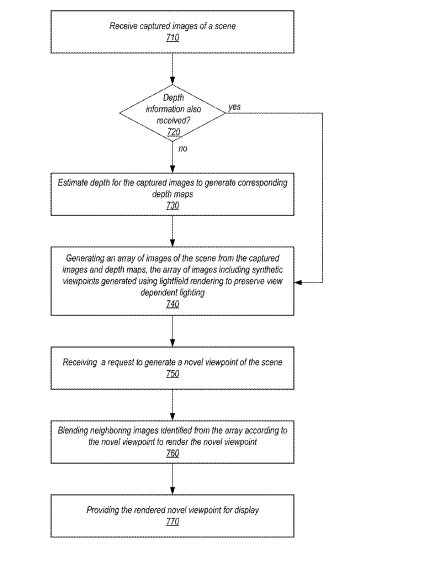
In one embodiment, the new viewpoint may be rendered using an array of camera images with synthesized viewpoints. Different viewpoints of the scene can be captured by image sensors. Depth information can be determined for the captured viewpoint. An image array may be generated that includes a synthetic viewpoint generated from the captured viewpoint and depth information. Can receive requests to present novel perspectives. The new viewpoint can then be rendered using the image array with the synthesized viewpoint.
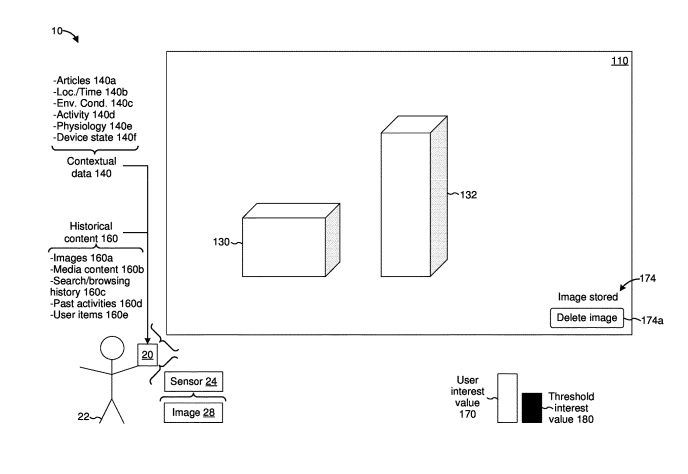
In one embodiment, the patent describes a method that includes, while presenting a representation of the physical environment of the device, obtaining contextual data indicative of characteristics of the physical environment, the device, or a user of the device, and obtaining an indication of historical content associated with the device. . The method includes determining a user interest value indicative of a user's level of interest in the physical environment based on characteristics indicated by contextual data and historical content. The method includes storing images captured by an image sensor in response to a user interest value being greater than a threshold interest value.
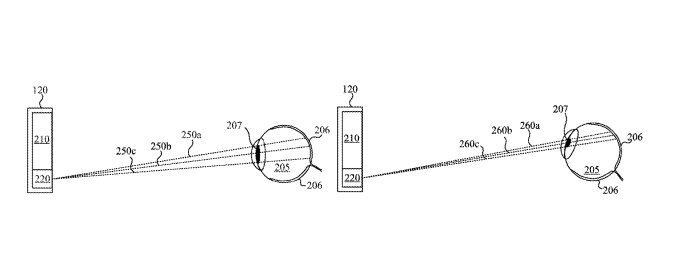
In one embodiment, the patent describes capturing an image of an illuminated retina and using the image to perform an eye tracking method. For example, the newly captured image can be compared to a previously captured image or model of the retina to determine the 3D position or orientation of the eye relative to the camera/tracking system. The diffuse light is directed to the retina to create a reflection, which is captured by the camera.
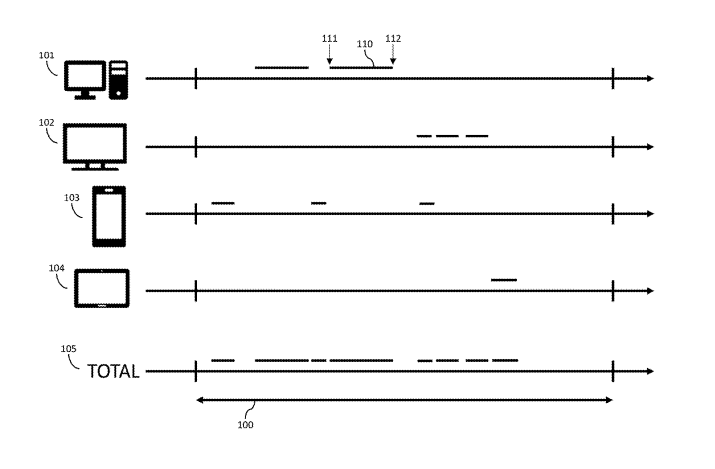
In one embodiment, the headset may be configured to track screen time. Head-mounted devices can advantageously track screen time across a variety of devices. Various modes for tracking screen time are available based on accuracy, power consumption, and privacy. Headsets can track based on battery level, device settings, or patterns entered by the user. The headset can accumulate screen time in a database, and the screen time can be linked to devices in the database based on device information collected by the headset during tracking. The headset can be configured to generate and display alerts based on one or more rules regarding screen time.
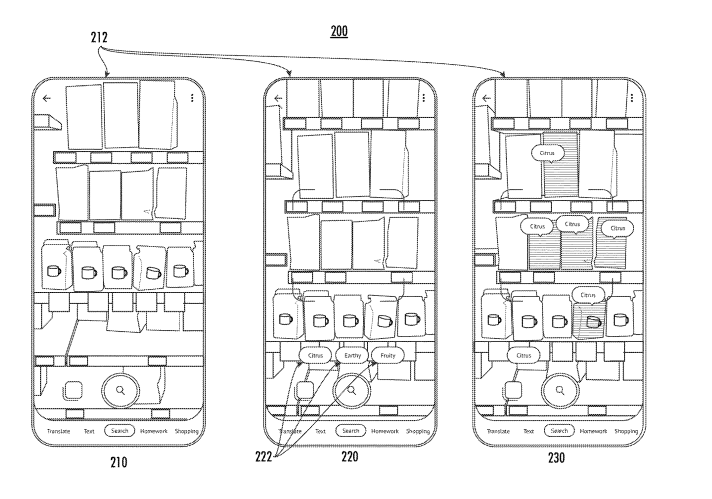
In one embodiment, a system for providing scene understanding may include obtaining multiple images, stitching images associated with the scene, detecting objects in the scene, and providing information associated with the objects in the scene. The system may include determining filter tags or query tags that may be selected to filter multiple objects, which may then be provided as information to the user to provide further understanding of the scene. Information may be provided in the augmented reality experience via text or other user interface elements anchored to objects in the image.
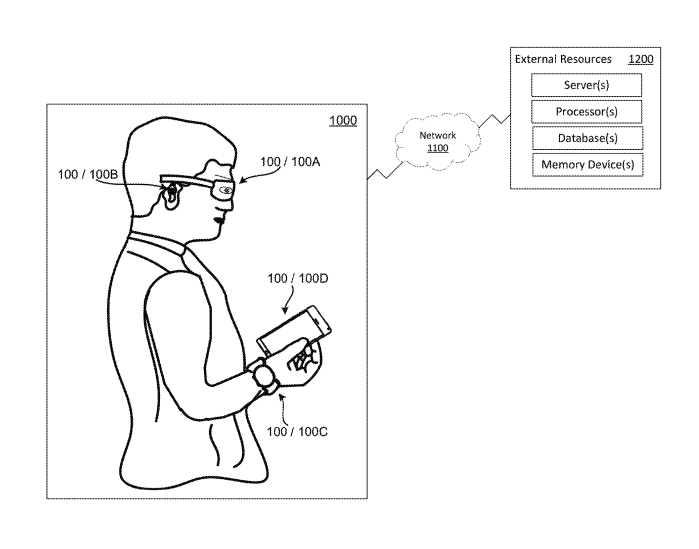
In one embodiment, the system described in the patent captures images of multiple objects and/or entities in a physical environment and identifies the objects/entities in the captured images. The computing system retrieves information related to the identified object/entity and outputs the information to a user of the computing system. In identifying multiple objects/entities and retrieving related information, the computing system may access the information locally and/or from external resources. Information to be output by the computing system may be selected in response to user input or based on set user preferences or known user data. The output of information related to multiple objects/entities may allow a user of the computing system to compare multiple objects or entities and make a selection related to one or more of the objects/entities without the need for multiple separate searches. informed decision.
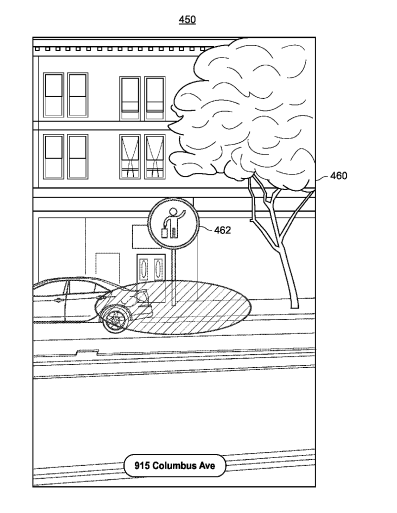
In one embodiment, in order to present the ride location in the transportation service, the server device receives a ride-sharing service request from the current location of the rider to the ride location. The server device broadcasts the request to the drivers and receives an indication from one of the drivers to accept the request. The server device then provides the pick-up and drop-off locations to the rider and driver, and the pick-up and drop-off locations are presented in the map display of the rider's and driver's client devices. When the current location of the occupant or driver is within a threshold distance of the pickup location, the corresponding client device switches to augmented reality mode and presents a camera view depicting a real-world image from the client device's camera. The server device provides information to the corresponding client device to present the information superimposed with real-world images in an augmented reality mode to help the rider or driver find the pickup location.
38.《Snap Patent | Augmented reality unboxing experience (Snap patent: AR unboxing experience)》
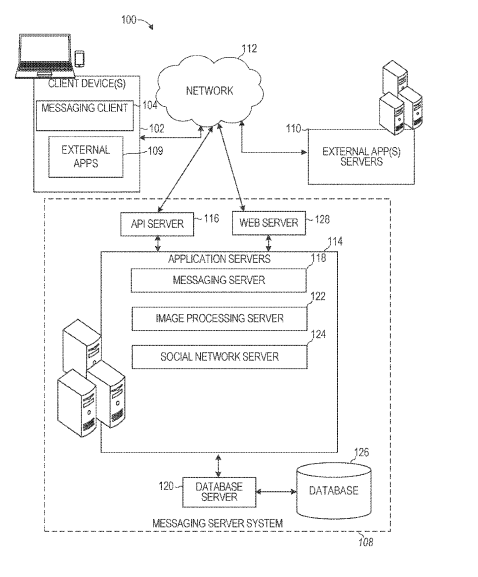
In one embodiment, the patent describes operations that include retrieving an augmented reality element that includes a virtual box in a closed state. The operations include obtaining a trigger associated with the virtual box, wherein the trigger is configured to change the virtual box from a closed state to an open state. The operations include displaying the virtual box to receive input associated with the virtual box; determining that the received input corresponds to one or more triggers associated with the virtual box; and modifying the virtual box from being displayed in a closed state to being displayed in an open state.
39.《Snap Patent | Tracking an augmented reality device (Snap Patent: Tracking AR device)》
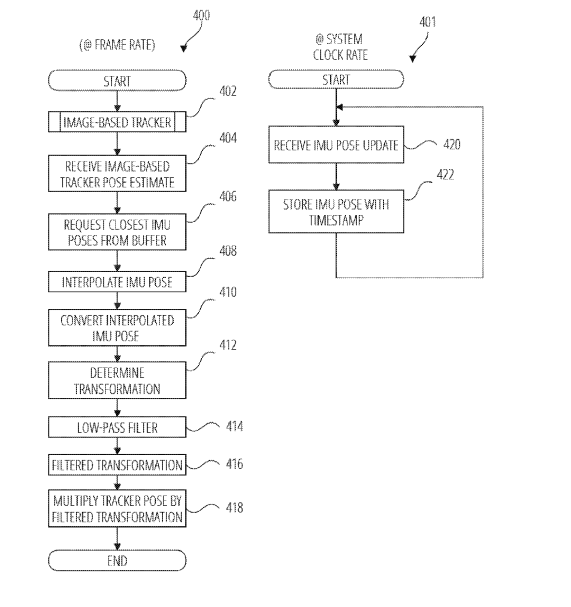
In one embodiment, the patent describes an augmented reality device that generates updated position and orientation (pose) values by initially determining pose estimates from a current image frame, a previous image frame, and a previous pose using image-based processing. Then, the IMU attitude is obtained from the data generated by the inertial measurement unit including the motion sensor, and the transformation between the attitude estimate and the IMU attitude is determined. Transformations are applied to pose estimates to generate pose updates. Media content is applied to the location within the image, and the location is updated based on the pose.
40.《Snap Patent | Dynamic augmented reality experience (Snap patent: dynamic AR experience)》
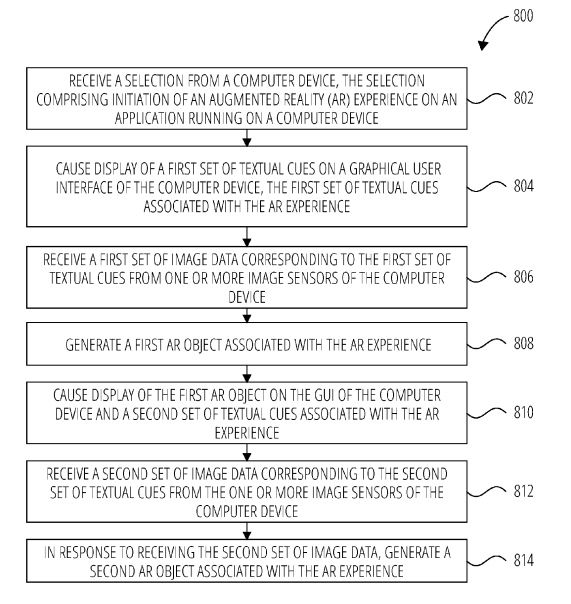
In one embodiment, the AR experience system described in the patent receives a selection of an AR experience from an application running on a computer device, displays a first set of text prompts associated with the AR experience on the computer device, and receives a selection of text cues associated with the first set of text clues. Corresponding to the first set of image data, generate a first AR object associated with the AR experience, display the first AR object and a second set of text prompts associated with the AR experience on the computer device, receive a second set of image data corresponding to the second set of text prompts, and generating a second AR object associated with the AR experience.
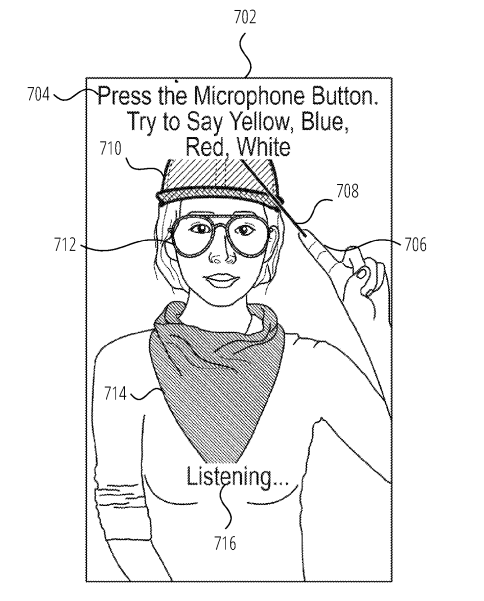
In one embodiment, the multimodal interaction system described in the patent receives a selection for an augmented reality AR experience within an application of a computer device, displays a set of AR objects associated with the AR experience in a graphical user interface GUI of the computer device, and A GUI displays textual prompts associated with the set of augmented reality objects, receives gestures and voice commands, modifies a subset of the augmented reality objects in the set of augmented reality objects based on the gestures and the voice commands, and in the The GUI displays a subset of modified augmented reality objects.
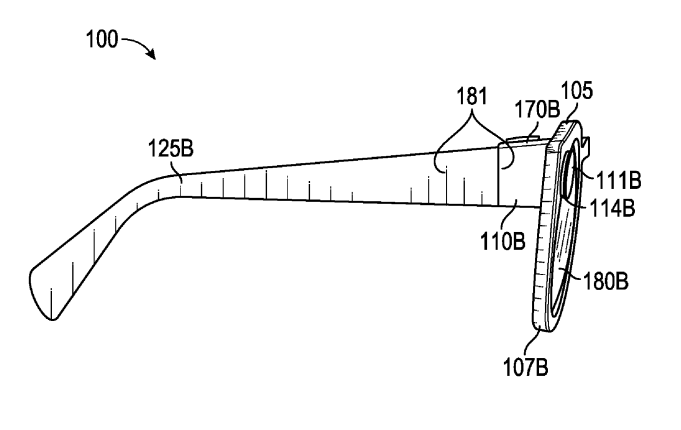
In one embodiment, an interactive augmented reality experience is performed using an eyewear device including a virtual eyewear beam. The user can direct the virtual beam through the eyewear device or the user's eye gaze, or both. The eyewear device may detect the direction of the opponent's eyewear device or the eye gaze of both. The glasses device can calculate scores based on hits from the user's and opponents' virtual beams to various target areas, such as other players' heads or faces.
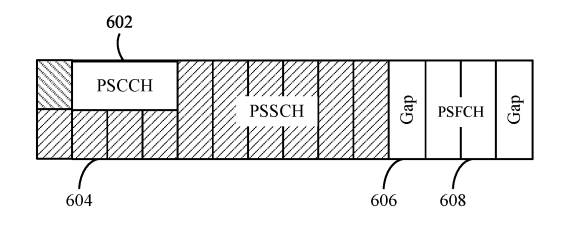
In one embodiment, the patent describes sidelink interference measurement and reporting technology. A method of wireless communication by a first user equipment (UE) includes receiving signaling indicating resources for sidelink interference measurement; sending a first interference report to at least a second UE. Wherein, the first interference report is based on interference measurements performed on the indicated resource.
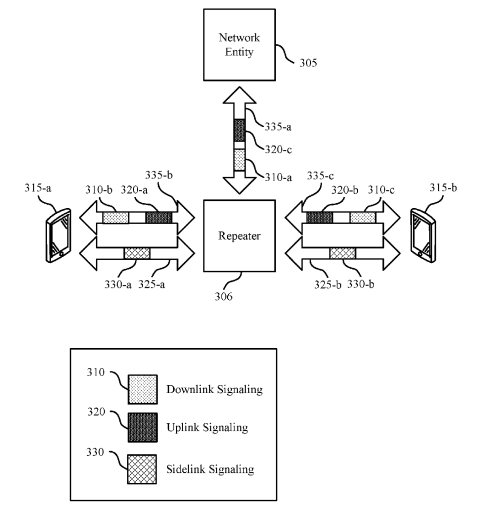
In one embodiment, the first device may identify a first Sidelink communication timing of the first UE and a second Sidelink communication timing of the second UE. The first UE and the second UE may communicate with the first device. The first device may determine a timing offset to be used by the first device when repeating Sidelink messages between the first UE and the second UE. The first device may determine the timing offset based on the first Sidelink communication timing and the second Sidelink communication timing. The first device may repeat side Sidelink messages between the first UE and the second UE based on the sidelink timing offset.
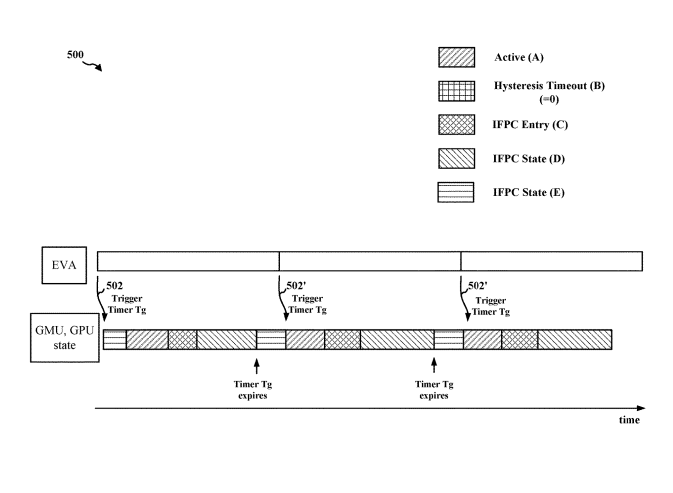
In one embodiment, the patent describes a method that includes a computer program encoded on a storage medium. The graphics processor may receive an indication from the application of the time period of the timer associated with exiting the IFPC state. The graphics processor can process one or more predefined workloads when triggering the timer associated with exiting the IFPC state. The graphics processor can initiate the IFPC state when one or more predefined workloads have completed processing. The graphics processor can exit the IFPC state when it detects that the timer has expired.
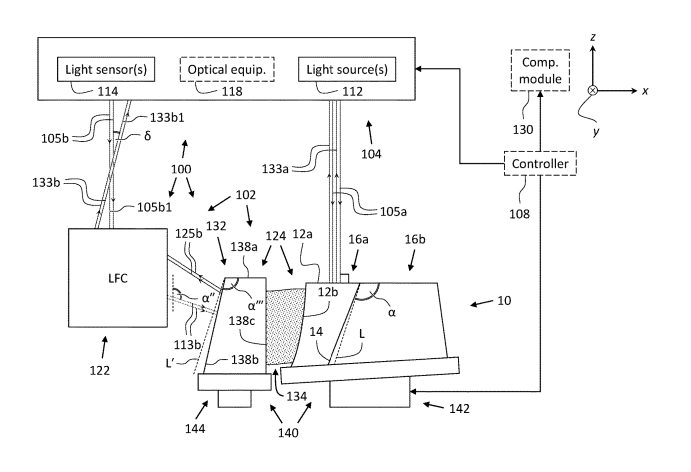
In one embodiment, the patent describes a method that includes providing a light guide LGA configured to redirect light incident thereon in a direction normal to an outer surface of the sample into the sample such that Light is nominally incident perpendicularly to the inner surface of the sample; a first incident beam LB and a second incident beam LB are generated, the first incident beam LB is directed perpendicularly to the outer surface, and the second incident beam LB is parallel to the first incident beam LB. incident LB and directed towards the LGA; the first return LB is obtained by reflecting the first incident LB from the outer surface, and the second incident LB is obtained by redirecting the second incident LB into the sample, reflecting from the inner surface and being redirected in the opposite direction by the LGA 2. Return LB; measure the angular deviation between the returned LBs, and infer the actual tilt angle of the inner surface relative to the outer surface.
Related posts




